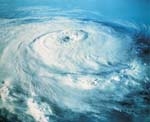Tropical Cyclone Update

‘Heta’, the first severe tropical cyclone (category 5 – most severe) of the season, originated from a disturbance north of Fiji on 28 December. It moved to develop into a tropical cyclone just west of Atafu, the northernmost part of the Tokelau Islands on 2 January.
Heta continued to track south, passing west of Samoa on 5 January, and then southeast, with sustained winds near its centre exceeding 220 km/h. The western Samoan island of Savai’i experienced 145–160 km/h wind gusts, and on the main island of Upolu, Apia airport was closed. A few roofs were lifted. Crops were destroyed, roads were blocked, bridges were damaged, and power cut. Heavy rainfall accompanied the high winds. American Samoa reported losses equivalent to $226 million, due to roads washed away.
Heta also caused extensive damage to utlities, homes and vegetation in American Samoa. The acting Governor of American Samoa declared a “state of emergency” for the territory.
The cyclone increased in intensity and estimated maximum sustained wind speeds reached 260 km/h with gusts to 300 km/h as it approached Niue, its centre passing just west (within 50 km) of Niue on the evening of 6 January. The lowest mean sea level pressure recorded on Niue was 977.2 hPa. Niue Island was devastated, with estimated wind speeds of 220 km/h and gusts of 275 km/h.
One person died and her baby girl was severely injured when their Alofi house collapsed. Several other people were also injured. Many people were left homeless. Much property was severely damaged or destroyed (including the hospital), many roads were closed, telecommunications and electricity were cut, and crops were badly damaged from the high winds and intense rainfall. A national disaster was declared.
The Cook Islands was another small nation that felt some of Heta’s fury, experiencing 6-m swells. The worst affected area was the west coast of the main island Rarotonga, a popular tourist destination. The system gradually began to decay when it tracked further southeast over sub-tropical waters.
